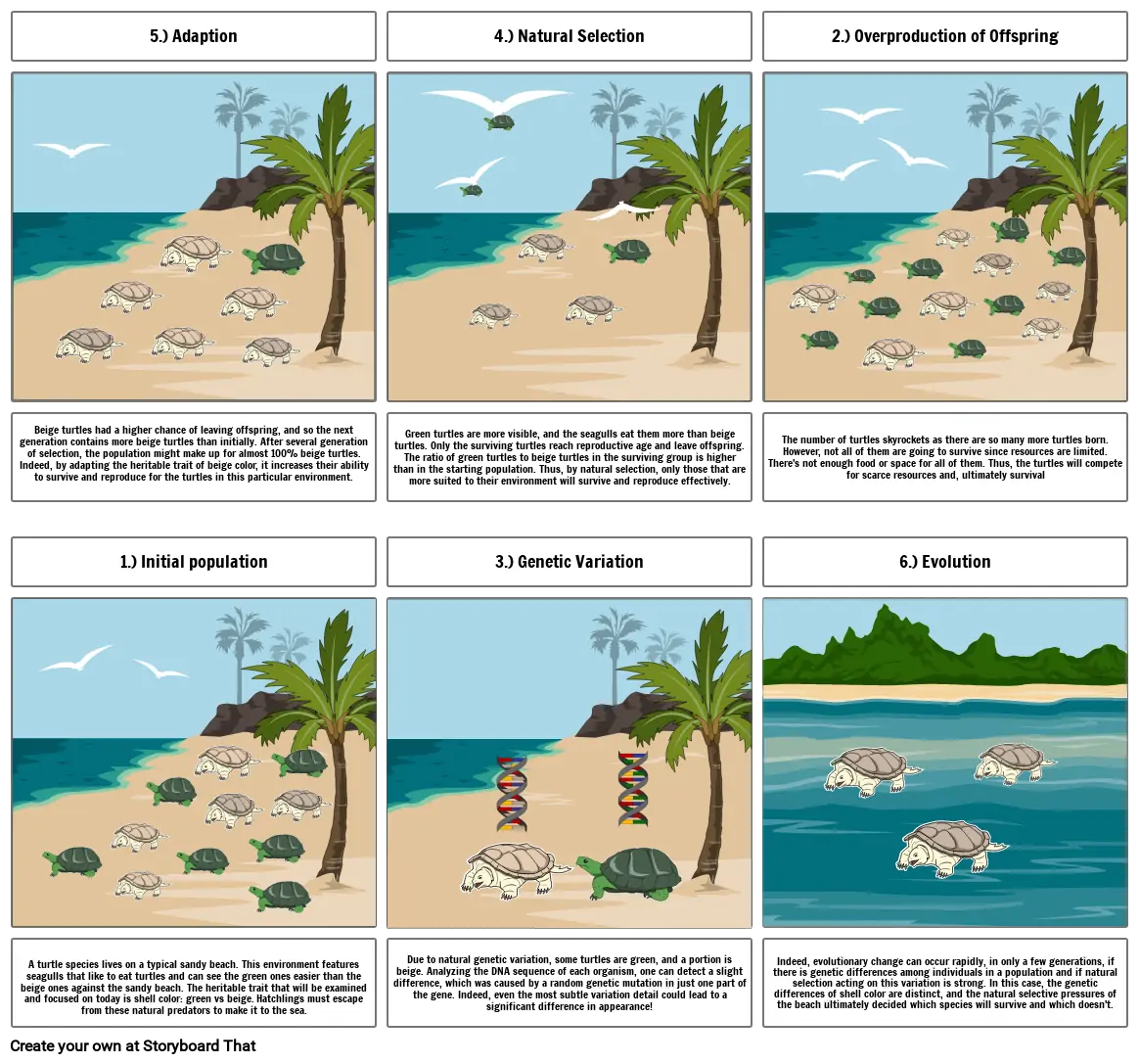Natural selection

Süžeeskeem Tekst
- 5.) Adaption
- 4.) Natural Selection
- 2.) Overproduction of Offspring
- Beige turtles had a higher chance of leaving offspring, and so the next generation contains more beige turtles than initially. After several generations of selection, the population might make up for almost 100% beige turtles. Indeed, by adapting the heritable trait of beige color, Beige turtles had a higher chance of leaving offspring, and so the next generation contains more beige turtles than initially. After several generation of selection, the population might make up for almost 100% beige turtles. Indeed, by adapting the heritable trait of beige color, it increases their ability to survive and reproduce for the turtles in this particular environment.
- 1.) Initial population
- Green turtles are more visible, and the seagulls eat them more than beige turtles. Only the surviving turtles reach reproductive age and leave offspring. The ratio of green turtles to beige turtles in the surviving group is higher than in the starting population. Thus, by natural selection, only those that are more suited to their environment will survive and reproduce effectively.
- 3.) Genetic Variation
- The number of turtles skyrockets as there are so many more turtles born. However, not all of them are going to survive since resources are limited. There's not enough food or space for all of them. Thus, the turtles will compete for scarce resources and, ultimately survival
- 6.) Evolution
- A turtle species lives on a typical sandy beach. This environment features seagulls that like to eat turtles and can see the green ones easier than the beige ones against the sandy beach. The heritable trait that will be examined and focused on today is shell color: green vs beige. Hatchlings must escape from these natural predators to make it to the sea.
- Due to natural genetic variation, some turtles are green, and a portion is beige. Analyzing the DNA sequence of each organism, one can detect a slight difference, which was caused by a random genetic mutation in just one part of the gene. Indeed, even the most subtle variation detail could lead to a significant difference in appearance!
- Indeed, evolutionary change can occur rapidly, in only a few generations, if there is genetic differences among individuals in a population and if natural selection acting on this variation is strong. In this case, the genetic differences of shell color are distinct, and the natural selective pressures of the beach ultimately decided which species will survive and which doesn't.
Loodud üle 30 miljoni süžeeskeemi

